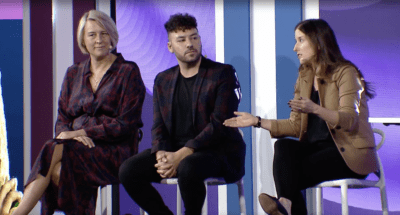If there’s one thing every customer success (CS) leader is talking about these days, it’s digital customer success.
The notion of having to scale or be more efficient with resources by leveraging digital channels and programs is one that excites any customer organization, big or small. Yet, there are so many possibilities that it’s hard to get a structured program going. Where do you start? There’s so much theory out there but few practical examples with results.
We’re sharing five actionable strategies from our Pulse Europe 2022 panel.

1. Standardize and Simplify Your Onboarding Journey
This first strategy comes from Sonia Leighton, Chief of Customer Success at Arbor Education. The company has two products, a Management Information System to automate school workflows, saving teachers time, and benchmarking analytics to identify areas of concern and reduce time to intervention. Using Gainsight Journey Orchestrator, Salesforce, Calendly, and group webinars, the company was able to convert its drawn-out and highly personalized onboarding journey into a standardized, templated digital journey. This adjustment enabled Arbor Education to onboard four times as many schools in half the time.
“We hit hockey stick growth this year and onboarded a typical year’s worth of schools in one quarter. We couldn’t have done this without the digital journey,” says Leighton.
Sit down with your CS team to think of the necessary content, timeframes, and milestones a new customer should properly go through to have a successful onboarding and repeat!
2. Ask Yourself: Can This Be a Digital Touchpoint?
Our second strategy is from Ky Ismet, Director of CS at Ometria. Ismet wanted to reimagine the existing tech touch program to improve inefficiencies and provide a better customer experience. Ometria introduced more digital-led touchpoints leveraging Zendesk adjacent to Support creating a Success Hub for its tech touch customers with the intention of strategic guidance, enablement materials, and quarterly product roadmap materials hosted there.
“We’ve scaled out valuable CS lead interactions through intentional en-masse messaging in the app or via the monthly Success team-led newsletters,” says Ismet.
Here are some of the ways Ometria scaled education and support:
- Monthly Success team-led newsletters
- Utilize Monday for bespoke projects and creative work requests are handled via Monday with Slack form requests enabled for easier internal handling
- Utilize Zoom for customer engagement upon request with on-the-spot how-tos driven through Loom
3. Let Your Customers See How They Stack Up
The third strategy comes from Mari-Frances Bentvelzen, SVP and GM at SAP Concur SMB. Bentvelzen and team wanted to help customers better understand how they stacked up against others in their industries by utilizing benchmarking and customer-specific data. They did this by leveraging Gainsight to send outcomes-based email journeys to our digital customers.
“We essentially pulled conversations that our CSMs were having live and broke them down into a series for our digital customers. These emails extrapolate specific customer data and compare it to what others in their industry are doing,” she says. “For example, for a customer who is looking to drive employee experience, we call out their average days to reimburse their employees and then those of their peers.”
The team also includes embedded digital assets and opportunities for customers to engage live if they have questions or want to know more (1:many sessions that are hosted).
This type of specific and tailored benchmarking content isn’t something your customers can find through a Google search and will be more valuable than generic tips and tricks.
4. Keep It Engaging With Short-Form Content
Is our attention span that of a goldfish? No. But is it getting shorter with technology? Probably. Our fourth strategy comes from Anika Zubair, VP of Customer Success at Karbon who is giving customers with these shorter attention spans the option to learn at their own rate. Zubair’s team was looking to increase engagement opportunities outside of the team’s KBRs (Karbon Business Reviews).
“KBRs (Karbon Business Reviews) have been key for us. We have always seen a direct correlation between customers engaging with us on how they use Karbon and how sticky they are as a customer. Knowing their usage, upcoming roadmap, and how to better utilize our product is key. So we have started to use short-form content to engage our customers that are not on traditional 1-1 KBRs,” she says.
Some of the ways Karbon has created short-form content is:
- Videos shorter than 90 seconds
- Emails with two sentences and a report
- Auto-generated usage reports that include how customers use Karbon and how they can do so better
However, Zubair emphasizes that even with digital touch, human interaction is critical. The automated email and report with a link to a video and the community may be the initial touchpoint but CSMs, RevOps, and the Data Analytics team are all tracking open and click rates to see what is performing well and who is interacting with what content.
5. Back to Basics: Segment, Set Milestones, and Monitor Health
These steps may seem like obvious strategies when it comes to DCS, but there are some companies who may have not yet worked on the basics. The final strategy comes from Amy Manning, SVP of Customer Success & Support at Comeet. Manning has worked at companies where there was no segmentation at all and she had to create those customer buckets herself. She came into Security Scorecard with 400 customers all on the same customer journey.
Once digging in and looking at ARR, she found about half the customers belonged in a tech touch bucket. From there, Manning and the CS team built a digital onboarding journey based on milestones met or missed. If you hit a milestone, you were moved to the next step. If you didn’t hit a milestone by a certain time period, you got automated reminders.
For those looking for more support, the team held monthly open office hours where users could sign up for one-on-one time. If there were repeated questions, the team would incorporate that content into the onboarding.
Once onboarding was complete, a user was either placed in a mature or immature bucket and receive content targeted for their respective persona.
Finally, in addition to these user segments, customers’ health scores were continuously monitored for growth opportunities or risk. If the latter, a digital CSM would reach out.
But the point is, different users will want and need different levels of support and not all of your customers will need a dedicated CSM to walk them through every step of the way. By segmenting smart, you can not only give your customers what they want, but also be more efficient with your CSMs’ time.
Learn More
Looking create a single destination for your customers to connect, share best practices, provide feedback, and build a stronger relationship with your product?
Schedule a demo to discover the community platform that keeps your customers coming back for more.
